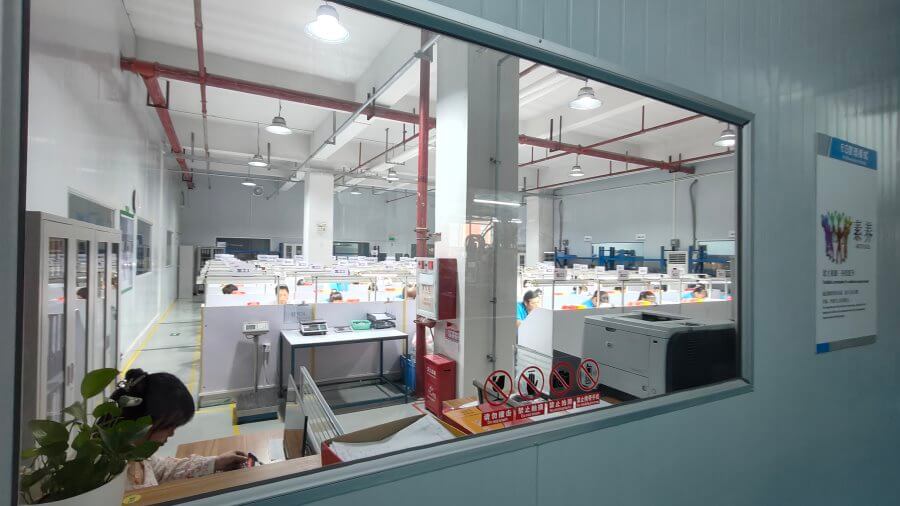Plastics, derived from synthetic resins with high molecular weight, form the core of what we know as plastic materials. These resins are combined with additives such as plasticizers, stabilizers, flame retardants, lubricants, and colorants to achieve a solid-state form after processing. Plastics can be shaped during manufacturing through a flow process, resulting in either flexible thermoplastics or rigid thermosetting plastics.
Synthetic resin is the primary ingredient of plastic, typically comprising 40% to 100% of the material. Due to its dominant role, resin often defines the properties of plastic, leading to the misconception that they are synonymous. However, resins are unprocessed polymers used not only for plastics but also as raw materials for coatings, adhesives, and synthetic fibers. Most plastics require additional substances alongside resins to form the final product.
Types of Plastic
Plastics can be classified based on their physical and chemical properties into two main categories: thermoplastic and thermosetting plastics.
1.Thermoplastic Plastics
Thermoplastics are plastics that melt upon heating and can be reshaped repeatedly. This reversibility, caused by physical changes between solid and liquid states, makes thermoplastics highly versatile.
2.Thermosetting Plastics
Thermosetting plastics undergo a chemical reaction during the manufacturing process, forming a rigid, irreversible structure. Once hardened, these plastics do not soften upon reheating, making them ideal for permanent applications.
Thermoplastic vs. Thermosetting
- Thermoplastics: Soften and become moldable with heat, then harden upon cooling. This cycle can repeat, involving only physical changes.
- Thermosetting Plastics: Initially soft and moldable, but after heating, they harden through a chemical reaction. This change is permanent and irreversible.
- Thermoplastics
Thermoplastics are widely used materials that can soften at certain temperatures and solidify upon cooling, retaining this property for repeated use. Examples include:- Nylon (PA)
- Polyethylene (PE)
- Polypropylene (PP)
- Polyvinyl Chloride (PVC)
- Acrylonitrile Butadiene Styrene (ABS)
- Polystyrene (PS)
- Polyoxymethylene (POM)
- Polycarbonate (PC)
- Polyurethane (PU)
- Polytetrafluoroethylene (PTFE)
- Thermosetting Plastics
Thermosetting plastics harden after a chemical reaction during initial heating, making them ideal for permanent products. Examples include:- Phenolic Resins (PE)
- Urea Formaldehyde (UF)
- Melamine Plastics
- Alkyd Resins
- Unsaturated Polyester (UP)
- Epoxy Resins
- Polyurethane Resins (PU)
Classifications of Plastics
1. General Purpose Plastics
Generally, this refers to plastics that are widely produced, have broad applications, good molding properties, and are inexpensive. There are five main types of general-purpose plastics: polyethylene (PE), polypropylene (PP), polyvinyl chloride (PVC), polystyrene (PS), and acrylonitrile-butadiene-styrene copolymer (ABS). These five types dominate the majority of plastic raw material usage, while others are classified as specialty plastics, such as PPS, PPO, PA, PC, POM, etc. These specialty plastics are used sparingly in daily products and are primarily applied in high-end fields like engineering industries, national defense technologies, and sectors such as automotive, aerospace, construction, and communications.
Plastics are classified by their plasticity into thermoplastics and thermosetting plastics. Generally, thermoplastic products can be recycled, while thermosetting plastics cannot. Based on their optical properties, plastics can be categorized as transparent, translucent, or opaque. For example, PS, PMMA, AS, and PC are transparent plastics, while most others are opaque.
Properties and Applications of Common Plastics
- ABS:
ABS is a versatile engineering plastic with excellent physical, mechanical, and thermal properties. It is widely used in household appliances, panels, masks, assemblies, accessories, and more. It is especially prevalent in household appliances such as washing machines, air conditioners, refrigerators, and fans, with significant consumption. Additionally, ABS has broad applications in plastic modification. - Polyethylene (PE):
Common polyethylene is divided into low-density polyethylene (LDPE), high-density polyethylene (HDPE), and linear low-density polyethylene (LLDPE). Among these, HDPE has better thermal, electrical, and mechanical properties, while LDPE and LLDPE offer better flexibility, impact resistance, and film-forming properties. LDPE and LLDPE are mainly used for packaging films, agricultural films, and plastic modification. HDPE has a wider range of applications, including films, pipes, and injection-molded household items. - Polypropylene (PP):
Polypropylene has more varieties and complex uses across multiple fields. The main types include homopolymer polypropylene (homopp), block copolymer polypropylene (copp), and random copolymer polypropylene (rapp). Depending on the application: - Homopolymer is mainly used in filaments, fibers, injection molding, and BOPP films.
- Copolymer polypropylene is primarily used for injection-molded parts in household appliances, modified raw materials, daily injection-molded products, and pipes.
- Random polypropylene is used for transparent products, high-performance items, and high-performance pipes.
- Polyvinyl Chloride (PVC):
Due to its low cost and self-extinguishing properties, PVC is widely used in construction, especially for sewer pipes, plastic-steel doors and windows, sheets, and artificial leather. - Polystyrene (PS):
As a transparent raw material, polystyrene is widely used in applications requiring transparency, such as car light covers, transparent daily-use items, transparent cups, and containers.
2. Engineering Purpose
Engineering plastics generally refer to materials that can withstand external forces, have good mechanical properties, high and low-temperature resistance, and excellent dimensional stability, making them suitable for engineering structures. Examples include polyamide (nylon) and polysulfone. Engineering plastics can be further categorized into general-purpose engineering plastics and specialty engineering plastics.
Engineering plastics meet higher standards in mechanical performance, durability, corrosion resistance, and heat resistance. They are also easier to process and can replace metal materials. Widely used in industries like electronics, automotive, construction, office equipment, machinery, and aerospace, the trend of replacing steel with plastic and wood with plastic has become globally popular.
- General-purpose engineering plastics include polyamide, polyacetal, polycarbonate, modified polyphenylene ether, thermoplastic polyester, ultra-high molecular weight polyethylene, polymethylpentene, ethylene-vinyl alcohol copolymers, and more.
- Specialty engineering plastics are further divided into cross-linked and non-cross-linked types:
- Cross-linked types: polybismaleimide, polytriazine, cross-linked polyimide, heat-resistant epoxy resin, etc.
- Non-cross-linked types: polysulfone, polyethersulfone, polyphenylene sulfide, polyimide, and polyether ether ketone (PEEK).
3. Specialty Plastics
Specialty plastics refer to materials with unique functionalities designed for special applications, such as aerospace and aviation. Examples include fluoroplastics and organosilicon, which excel in high-temperature resistance and self-lubrication. Reinforced plastics and foam plastics, known for their high strength and cushioning properties, are also part of this category.
a. Reinforced Plastics:
Reinforced plastics can be classified based on appearance into three types:
- Granular: e.g., calcium-reinforced plastics.
- Fibrous: e.g., glass fiber or fiberglass-reinforced plastics.
- Sheet-like: e.g., mica-reinforced plastics.
Based on material composition, they can be divided into:
- Fabric-based reinforced plastics (e.g., shredded fabric or asbestos-reinforced plastics).
- Inorganic mineral-filled plastics (e.g., quartz or mica-filled plastics).
- Fiber-reinforced plastics (e.g., carbon fiber-reinforced plastics).
b. Foam Plastics:
Foam plastics are classified into rigid, semi-rigid, and soft types:
- Semi-Rigid Foam Plastics: These have properties that fall between rigid and soft foam plastics in terms of flexibility and performance.
- Rigid Foam Plastics: These lack flexibility, have high compressive hardness, and only deform under significant stress. Once the stress is removed, they cannot return to their original shape.
- Soft Foam Plastics: These are highly flexible, have low compressive hardness, and deform easily. Once the stress is removed, they return to their original shape with minimal residual deformation.
Plastic Container Materials and Properties Table
In daily life, many food containers are made of plastic. Below are different types of plastic materials. These numbers help differentiate the materials during recycling processes.
1. PET (Polyethylene Terephthalate)
Common uses: Mineral water bottles, carbonated beverage bottles, etc.
Usage: Heat resistant up to 65°C, cold resistant to -20°C. Suitable only for warm or cold drinks. When used for hot liquids or heated, it may deform and release harmful substances. Scientists have found that after 10 months of use, 1-type plastic products may release DEHP, a carcinogenic substance toxic to the testes.
Note: Dispose of beverage bottles after use; do not reuse them as water cups or storage containers for other items to avoid health risks. Avoid using beverage bottles for hot water or placing them in cars under sunlight. Do not store alcohol or oils in them.
2. HDPE高密度聚乙烯
Common uses: Packaging for cleaning products, bath products.
Usage: Can be reused after careful cleaning. However, these containers are often difficult to clean thoroughly, leaving residues of the original cleaning products that can become a breeding ground for bacteria. Avoid reusing them as water cups or storage containers.
Note: Due to the difficulty of thorough cleaning, it is recommended not to reuse them.
3. PVC聚氯乙烯
Common uses: Raincoats, building materials, plastic films, plastic boxes, etc. Rarely used for food packaging.
Usage: This material is versatile and inexpensive, making it widely used. However, it is only heat resistant up to 80°C. At high temperatures, it easily releases harmful substances and even toxic chemicals during manufacturing. If ingested with food, it may cause breast cancer or congenital defects in newborns. Containers made of this material are seldom used for food packaging now. Do not expose it to heat if used. It is difficult to clean and prone to residues; avoid reuse. Do not purchase drinks stored in such materials.
Note: Not suitable for food packaging.
4. LDPE低密度聚乙烯
Common uses: Cling film, plastic wrap, etc.
Usage: Not highly heat resistant. Generally, qualified PE cling film may melt when the temperature exceeds 110°C, leaving behind plastic additives that cannot be decomposed by the human body. The fats in food can easily dissolve harmful substances from the plastic wrap. Therefore, remove the plastic wrap before placing food in the microwave. High temperatures can release harmful substances, which may lead to breast cancer or congenital defects in newborns.
Note: Do not use plastic wrap to cover food when heating it in a microwave.
5. PP聚丙烯
Common uses: Soy milk bottles, yogurt bottles, juice bottles, microwaveable lunch boxes.
Usage: Common melting point up to 167°C. It is the only type of plastic container that can be safely placed in the microwave. It can be reused after careful cleaning. Be cautious, as some microwaveable lunch boxes are made of PP (microwave-safe PP can withstand temperatures up to 120°C, cold resistance to -20°C), but their lids are often made of 1-type PET due to cost. PET cannot withstand high temperatures and should not be microwaved with the container body. To be safe, remove the lid before microwaving.
Note: Remove the lid before placing in the microwave.
6. PS聚苯乙烯
Common uses: Instant noodle bowls, fast food boxes.
Usage: Resistant to heat and cold but should not be microwaved, as high temperatures can release chemicals (above 70°C). It should not hold strong acids (e.g., orange juice) or strong alkaline substances, as it can release harmful polystyrene that may cause cancer. Avoid using fast food boxes for packing hot foods.
Note: Do not microwave instant noodle bowls.
7. PC其他塑膠
Common uses: Water bottles, cups, baby bottles.
Usage: Widely used, especially for baby bottles. Contains bisphenol A (BPA), which is controversial. According to Dr. Lam Hon Wah, Associate Professor of Biology and Chemistry at Hong Kong City University, theoretically, as long as BPA is 100% converted into plastic structures during production, the product will not contain BPA or release it. However, if small amounts of BPA are not fully converted, they may be released into food or beverages. To be safe, take extra care when using plastic containers made of PC.
Tips for minimizing BPA risks:
- Do not heat PC containers.
- Do not clean them using dishwashers or dryers.
- Avoid direct sunlight on water bottles.
- Before first use, clean with baking soda and warm water, then air dry at room temperature. BPA tends to release more during the first use and with prolonged use.
- Discontinue use if the container is scratched or damaged, as the surface can harbor bacteria.
- Avoid repeatedly using aging plastic utensils.





